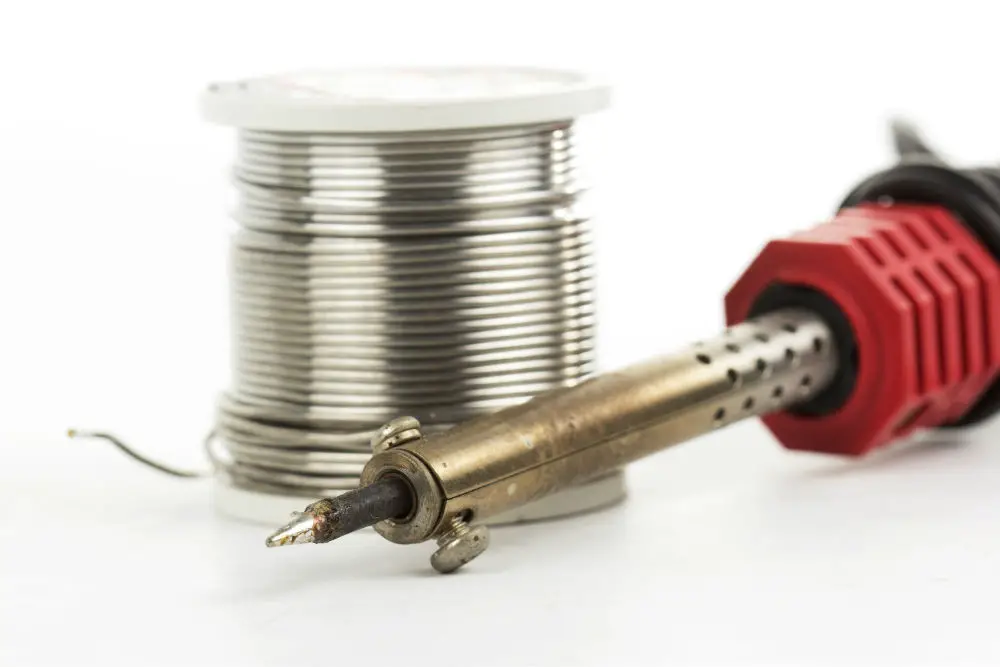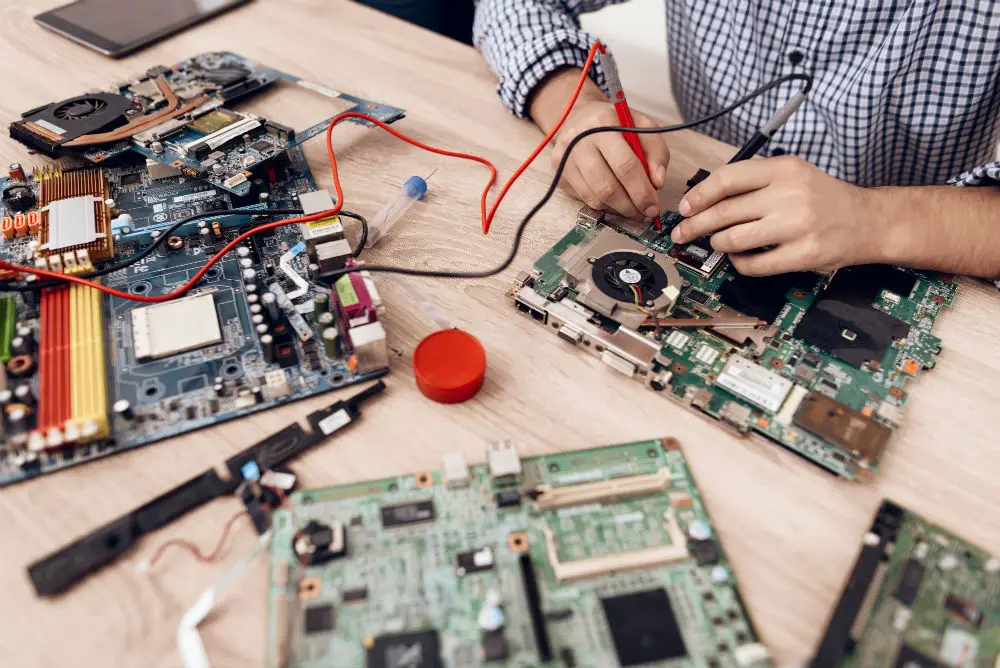A soldering iron is very useful to have if you work with electronics, wiring, or other small pieces of metal. Soldering irons allow you to easily join wires and small metal pieces.
It’s pretty much welding on a small scale and for electrical products. It’s a great skill to have if you plan on building anything in your home that involves metal or wiring.
Of course, the soldering iron is the tool to use for this task. However, you might not always have a soldering iron on hand, or you just might not want to shell out the money to buy one.
It is more difficult to solder without the soldering iron, but it is not impossible. So, let’s talk about how to solder without a soldering iron.
A Safety Warning
Keep in mind that if you do not have a soldering iron, you will need to work with an open flame to complete your soldering task. Therefore, we want to give you a bit of a safety warning because soldering without a soldering iron is not the safest thing to be doing.
First off, never leave your fire unattended, for various reason. You want to keep the fire contained; don’t make it too large, and keep it away from flammable objects.
Also avoid wearing baggy or loose clothing, and if necessary, tie your hair back. You will want to get a pair of fire-resistant gloves.

Getting a Heat Source
Since you don’t have a soldering iron, you are going to need a heat source to heat up the various parts and the solder itself. In this case, it means having an open flame or heat source to provide the heat needed to melt the parts.
The most important thing to keep in mind is that your heat source needs to be able to heat up the solder to its melting point, which is going to be between 400° and 700° Fahrenheit, or about 200° to 370° Celsius.
Things like normal butane lighters, oil lamps, alcohol burners, candles, and even open flames like a campfire should do just fine for this task. Some people even choose to use a thick tin can and create a small and contained fire inside. As long as your heat source can melt the solder, you will be fine.
Soldering by Heating the Wires Directly
The easiest way to solder with a soldering iron is to twist the wires together and heat them directly. It doesn’t require a soldering iron and is quite easy to do. If you are soldering wires, strip the insulation off the ends of the wires to be soldered together.
Now, twist the ends of the wires together with a few rotations. Make sure that the wires are twisted tightly together. What you want to do here is to heat up the wires using your open flame.
Make sure to not heat up the insulation past the exposed wires too much, as this can cause its own problems. Let the twisted wires heat up for about 20 seconds, then slowly apply a thin layer of solder to them. The solder should melt right onto the wires, but if it does not, heat up the wires more to make it melt.
You don’t want a cold solder joint as these are not effective. Now that you have the solder connection, you can cut off the rest of the exposed wires past the point of the solder.
Finding Scrap Metal to Use as a Soldering Iron
If you don’t want to heat the wires directly and solder that way, or if you want to solder something other than wires in a cord, you will have to find some scrap metal that you can use in place of a soldering iron. You can’t put a circuit board, or something like that, in an open flame, so this is necessary.
You could use an old pair of scissors, an old wrench, or any other piece of metal that is fairly long, has a grip on it, and can be heated up without melting on the spot. You want a fairly thick object, preferably made of steel.
Using Small or Large Heat Sources for Soldering
If you are working with a small heat source, such as a candle or a lighter, you need to use a small soldering iron, like the tip of old scissors. The best thing, is 14-gauge steel wire, as it heats fast, but retains heat fast enough to solder with. The wire is easy to bend into shape for various soldering positions. Nails and screwdrivers work too.
Now you want to use your lighter or candle to heat the soldering tool of choice. Heat it about ½ inch from the very tip, as this will help prevent damage and oxidization.
Allow the wire, nail, or other soldering tool of choice to heat up for about 20 seconds, then move quickly to solder the components that require soldering. If necessary, keep repeating this process until you are done.
If you are using a large open flame, you need to be safer. Make sure that the fire is not out of control and wear heat-resistant gloves.
Also, use metal tongs to handle the heated soldering tool. You want to use a long wire for this; an open flame is very hot and will heat up wire real fast. Glowing coals tend to work quite well for this.
The process here, other than the large open fire, is the same. Heat the soldering tool of choice and move quickly after it has heated.
Conclusion
As you can see, while it is not ideal by any means, it is more than possible to solder without a soldering iron. You just need some extra scrap metal, solder, and a source of heat. As long as you are safe and use good materials, it should all turn out just fine.

